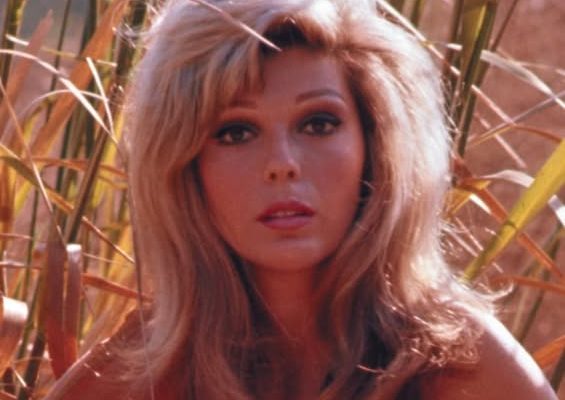At 85, Nancy Sinatra stands as one of the rare artists who managed to carve out her own legacy despite being born into the shadow of a giant. Frank Sinatra wasn’t just a father; he was a cultural force, the kind of star who reshaped American music. Growing up in the orbit of that kind of fame could’ve swallowed her whole. But Nancy made sure her voice didn’t echo anyone else’s—it carried its own fire.
Her early years in the industry weren’t glamorous. People assumed doors would swing open simply because of her last name, but the opposite happened. She struggled. Producers dismissed her. Early singles landed with a thud. Critics wrote her off as another celebrity child riding on pedigree. It stung, but she didn’t quit. Instead, she reassessed the one thing she had full control over: her craft.

In her mid-twenties, Nancy dug into vocal training with a seriousness people hadn’t seen from her before. She reworked her sound, dropped the timid delivery, and stepped into a richer, more commanding tone. Alongside that internal shift came a bold reinvention of her image—short skirts, sharp boots, attitude dialed all the way up. It wasn’t a gimmick. It was her stepping into who she always knew she could be.
Then came Lee Hazlewood.
Their collaboration was lightning in a bottle. Hazlewood heard something in her voice that others missed—a smoky undertone, a cool, confident edge—and he wrote for that version of her. He pushed her to sing lower, lean into her grit, and stop trying to sound “pretty.” Nancy embraced it.
In 1966, everything changed. “These Boots Are Made for Walkin’” didn’t just hit the charts—it detonated across them. The song became an anthem of independence, flirtation, and a kind of boldness women weren’t often allowed to claim publicly at the time. With her crisp stare, commanding stance, and iconic go-go boots, Nancy didn’t just perform the song—she embodied it.
Suddenly, everyone knew her name—and this time, it wasn’t because of her father.
More hits followed. “How Does That Grab You, Darlin’?” doubled down on her playful bite. “Sugar Town” showed her softer, wistful side. Then came the deep, moody duets with Hazlewood—“Some Velvet Morning,” “Summer Wine”—songs that felt like they belonged to some dreamlike desert world only the two of them understood. Those tracks aged into cult classics, gaining new life decades later in films, commercials, and fan remixes.
Hollywood noticed, too. Nancy’s screen presence had the same odd combination her music did: soft and sharp at the same time. She moved easily between music and acting, appearing in films alongside icons like Elvis Presley and Peter Fonda. By the late ’60s, she wasn’t just Frank Sinatra’s daughter—she was Nancy Sinatra, a full-fledged star in her own right.
But fame didn’t hold her hostage. When the 1970s arrived, Nancy stepped out of the spotlight deliberately. She wanted time for herself—time to raise her children, time to live outside the relentless grind of studios and sets. It wasn’t the dramatic “retire forever” move some artists make. It was simply a woman choosing her priorities on her own terms.
Still, creativity has a way of pulling people back.
In the ’90s, Nancy returned with a confidence that didn’t need to prove anything. She recorded new music, took risks most artists her age shied away from, and sought collaborations that bridged generations. Working with artists like Bono, Jarvis Cocker, Steven Van Zandt, and Morrissey wasn’t about chasing relevance—it was about curiosity, connection, and refusing to shrink with age.
Even as she reemerged onstage and in the studio, Nancy also committed herself to preserving her father’s legacy with sincerity and care. She hosted a radio show that honored Frank’s music the way only a daughter could—through stories, memories, and a sense of closeness the public rarely gets. She wrote books detailing his life, not as a myth, but as a man she loved and admired.
Today, at 85, Nancy’s life looks different—quieter, but still anchored in creativity. Her online boutique keeps her music and memorabilia alive for fans who refuse to let go of the era she helped define. She maintains an active relationship with her audience, staying engaged in ways that feel honest and personal rather than manufactured.
She still speaks with strength. She still stands firmly in her individuality. And she still refuses to let anyone else write her story for her.
What makes Nancy Sinatra compelling at this age isn’t nostalgia. It’s her resilience. Her career is proof that talent can rise above expectations, reinvention can happen at any age, and independence doesn’t expire when youth fades. She embraced reinvention not as a survival strategy but as an expression of self. And every chapter of her life—from struggling young singer to ’60s icon to reflective elder artist—carries that same message: you don’t wait to be handed a place in the world; you carve one out for yourself.
Nancy’s legacy isn’t just her hits, though those will outlive all of us. Her legacy is the path she walked—sometimes quietly, sometimes boldly, but always authentically. She built a career that didn’t lean on her father’s fame. She trusted her instincts, even when the world doubted them. She stepped back when she needed to, returned when she wanted to, and stayed true to who she was, whether she was 26 or 85.
And that’s why she still shines today.
She represents something rare: a woman who grew, changed, fell, rose, stepped away, came back, and never once apologized for the shape her journey took. In an industry obsessed with youth, Nancy Sinatra is a reminder that strength and self-belief never age.



